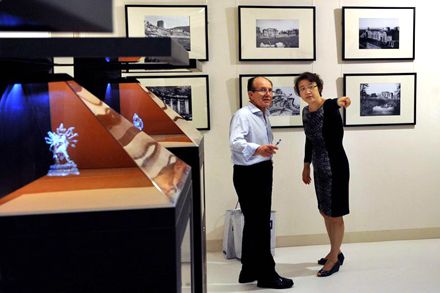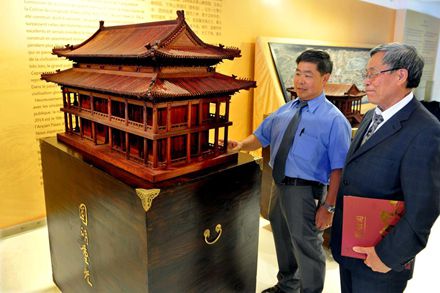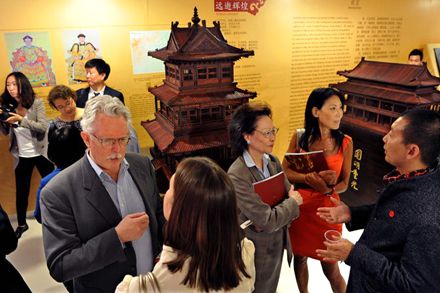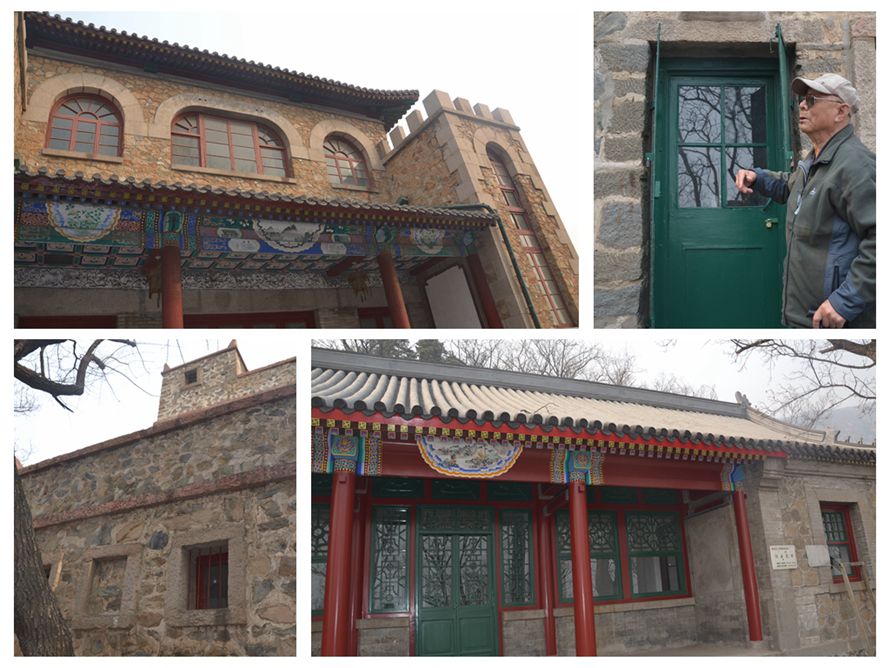

|
 |
|
About Bussiere | |
|
Jean Augustin Bussiere, who was born in 1872, came to China at the age of 40 as a doctor attached to the French embassy who then opened a clinic of his own in Beijing. He was once a doctor for Yenching University, the predecessor of Peking University and brought medical equipment from France and introduced advanced medical technology to China. The people around the Western hills of Beijing, in the Haidian district, recalled the doctor as being particularly fond of Chinese culture despite his lack of skill with the language and how he loved to wear long robes, eat Chinese food and study traditional painting. He even married a Chinese woman, Wu Sidan, and built a castle-like structure in the villa to treat patients from all over. During the War of Resistance against the Japanese (1937-45), he used his medical expertise to treat the wounded of the 8th Route Army and villagers and carried medicines to the front lines and carried radios for the army even if his life was in danger. His residence even became a transportation and communications center for the Chinese army. And, he was nearly 70 at the time. As the head of a hospital, he would ride more than 30 kilometers from downtown Peiking to the Western Hills on a bicycle loaded with medicines for the Shanxi-Chahar-Hebei Military Region where the Route Army had its camp. Shu Yi, the son of the noted writer Lao She, describes him this way, "Bussiere is a real international anti-fascist hero and a true friend of the Chinese. We should remember his life story and pass it on." And President Xi Jinping remarked during a visit to France this past March, "We will never forget the contribution made by numerous French friends to China's development. Bussiere, a French doctor, risked his life to transport much needed medicines on his bike to a base area against Japanese aggression." This is the highest form of praise and tells the world that he will always be remembered by the Chinese. |
Timeline 1920 Sino-French University established with Bussiere as board member, professor and doctor, and regularly hosting salons for friends in his residence. 1920-1923 Villa of Bussiere built on Yangtai Mountain. 1930 Built a bridge for villagers who lived at the foot of the mountain. 1936 Li Shizeng and Yao Tongyi presented a stone engraved with the characters Ji Shi Zhi Yi (Doctor who performs great deeds), which became a part of the stone villa. 1937 During Anti-Japanese War, Bussiere supports China in its fight and moves medicines to Shanxi-Chahar-Hebei Area. 1943 Bussiere helps move Huang Hao, an underground liaison man of the Communist Party, to Yan'an. 1954 Bussiere and his family leave the villa and return to France. 1950-1960 The Ministry of Trade takes over the villa. 1970 Villa gets put under China National Space Administration's 2nd Research Institute, 207th Bureau. 2001 Villa is listed as key relic under Haidian district protection. 2011 Villa becomes relic under Beijing protection. 2012 Shu Yi calls for the restoration of relics in the villa. 2013 A plan for protecting and restoring the villa is approved. 2014 Renovation work on the villa is completed. |
|
Cultural Exhibitions | |
|
Two exhibitions marking the 50th anniversary of the Sino-French relationship kicked off at the Association des Amis de Nouvelles d'Europe in the French capital, Paris, on Sept 8. The event aims to deepen exchanges and understanding between the two sister cities. Over one hundred guests from China and France attend the opening ceremony. More | |
|
"The Villa of Dr. Jean Bussiere (1872-1960), a French Doctor in Beijing" is divided into three sections themed "Doctor," "Neighbor" and "Friend." Through a number of photos, objects, video and staged scenes, the exhibition brings to life Bussiere's 41 years of helping the Chinese people and contributing to China's anti-Fascist war in Beijing. The exhibition will run from Sept 8 to 16.
|
The other exhibition, which presents the story of China's Old Summer Palace, or Yuanmingyuan, is being staged at the Association des Amis de Nouvelles d'Europe and the Xinhua Gallery. It will run until Sept 18. Visitors can take a virtual tour of the imperial garden's vast collection of treasures at the tech-friendly exhibition and watch a 3D film about the palace's gardens. |
|
|
 |
|
|
 |
|
 |
 |
|
Photo Gallery |
 |